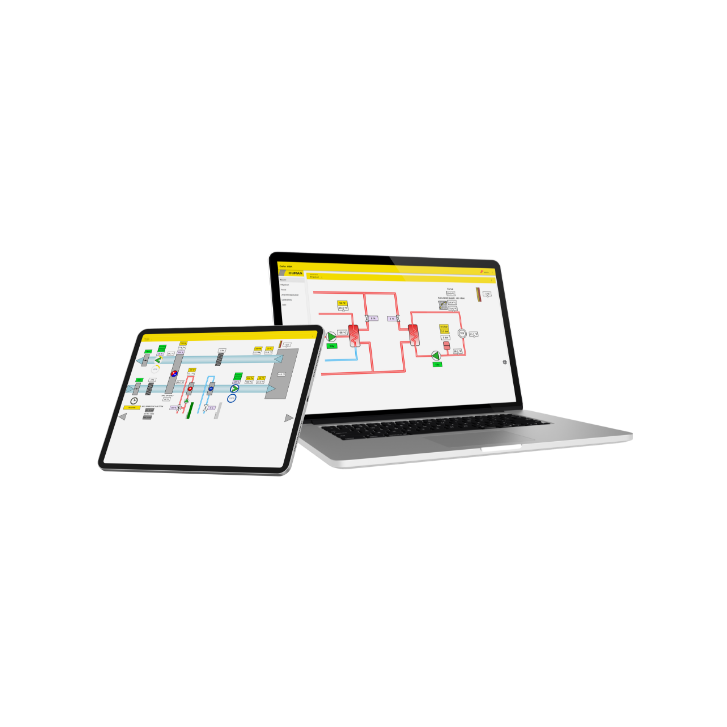

Heating, ventilation, and air conditioning (HVAC) systems are evolving rapidly with the integration of the Internet of Things (IoT). This fusion of technology paves the way for optimal control of our indoor environment. It eliminates the need for manual thermostat adjustments and prevents experiencing a cold home upon return. This union of tech makes our lives more convenient and our homes, more welcoming.
In HVAC contexts, IoT is paving new paths in environmental control and monitoring. IoT integration facilitates remote temperature adjustments, offers up-to-the-minute notifications, and analyzes data to promote optimal energy usage. For instance, IoT-compatible thermostats enable homeowners to tweak HVAC settings via smartphones, irrespective of their location.
Also, sensors connected to the system quickly pick up any malfunction or anomalies, ensuring timely maintenance and reducing system downtime. It's undeniable; IoT's inclusion in HVAC management is both seamless and advantageous.
Given the advent of IoT in HVAC, several distinct advantages ensue:
The efficacy of IoT integrations into HVAC rests on a set of crucial components.
Firstly, smart thermostats with the capacity to adjust temperature settings based on occupancy and weather conditions prove paramount in optimizing energy usage. Also, offsite monitoring empowers operation teams to detect and rectify issues promptly, preventing significant trouble. For instance, immediate data and alerts keep operators abreast of variations in system performance, enabling proactive maintenance and downtime reduction. Lastly, IoT compatibility with other smart devices, such as occupancy-detectors and humidity monitors, leads to a holistic and interconnected HVAC system catering to user needs.
From the many benefits IoT brings to HVAC systems, remote monitoring and control stand out. With IoT, overseers now have the ability to supervise their HVAC systems' performance and adjust settings remotely using mobile devices or computers. Real-time regulation can lead to improved energy efficiency and reduced operational costs. IoT-enabled systems can also automate maintenance alerts scheduling and ensure optimal performance with regular equipment health checks.
These applications enhance both the convenience of managing HVAC and overall system performance.
Web-based SCADA systems like Ouman's exemplify the application of the Internet of Things in HVAC. Accessing and controlling various system aspects remotely ensures both peak performance and energy efficiency. Operators can manage temperature settings, supervise equipment health, and identify anomalies on the fly.
This control degree boosts HVAC professionals' decision-making capability and facilitates proactive measures, improving comfort, reducing energy consumption, and minimizing operating costs. Such systems refine HVAC management and enhance system performance.
Read more about it here: https://www.oumangroup.com/products-services/ouman-cloud#ounet
One must weigh substantial considerations when introducing IoT in HVAC systems. Chief among these are security and privacy. As connected devices swell in numbers, securing these systems against potential cyber threats becomes paramount. IoT devices lack satisfactory security measures and are prone to unauthorized access and manipulation. Further, due to the wide range of data collection these connected devices undertake, users worry about how securely their personal information is handled.
Actions such as implementing robust authentications, encrypting communications, and regularly updating software can alleviate these concerns.
Seamless incorporation of new smart devices with existing systems is critical when implementing IoT in HVAC. This transition enables successful communication and coordination between the old and new elements, improving overall efficiency. For instance:
Mitigating the divide between legacy and IoT systems, enterprises can achieve cost-effective smart HVAC solutions without a complete system overhaul.
Scalability and maintenance, both, are vital for the success of IoT in HVAC systems. Failing to scale can leave systems struggling to adapt to changing requirements. As building occupancy grows, HVAC systems must adjust to increased heating or cooling demands. Moreover, ensuring adequate maintenance promotes optimal system performance, maximizes energy consumption reduction, and fosters system longevity.
Regular maintenance actions like cleaning filters and calibrating sensors engender system health and lifespan. Prioritizing scalability and maintenance drives energy efficiency, cost reduction, and comfort improvement.
Artificial Intelligence (AI) and Machine Learning (ML) have transformed the way HVAC systems integrate with IoT. These technologies permit HVAC systems to augment energy efficiency, improve indoor air quality, and enhance comfort.
For example, AI algorithms can sift through real-time data, adjusting heating and cooling based on occupancy patterns, weather conditions, and energy demand. ML can detect irregularities and predict equipment breakdowns, enabling proactive measures and cost savings. Harnessing AI and ML, HVAC systems can deliver optimized and personalized experiences without continuous manual oversight.
Smart grid integration proves indispensable for the IoT in HVAC. It facilitates bilateral communication between HVAC systems, improving energy utilization and overall system efficiency.
For example, intelligent thermostats can automatically adjust temperatures concerning occupancy and weather conditions, resulting in notable energy savings. Smart grid integration allows HVAC systems to respond to real-time energy demand, mitigate peak usage, and reduce related costs. This integration level improves user experience by offering convenience and cost savings and makes a quiet contribution towards a greener, more sustainable environment.
The marriage of IoT and HVAC systems has paved the path for expanding smart building and city concepts. IoT capabilities enable HVAC systems to modulate temperature intelligently, optimize energy utilization, and improve indoor air quality.
For example, smart thermostats can adapt to occupant preferences and make necessary adjustments, fostering personalized comfort and energy conservation. IoT-equipped HVAC systems can also provide real-time data on air quality, prompting interventions to improve occupant health and well-being. This increasing IoT adoption is redefining building and city operations, engendering a comfortable, sustainable environment for all.
The advent of the Internet of Things is causing a paradigm shift in the HVAC industry by infusing intelligence and efficiency into the system. IoT enables the HVAC devices to gather, analyze, and interpret data. Subsequently, it allows for real-time system monitoring and control - a move towards optimized energy use, better air quality indoors, and prevention of maintenance-related problems.
IoT's integration with HVAC systems allows users to control temperature settings remotely, receive instant alerts, and even get personalized recommendations to save energy.